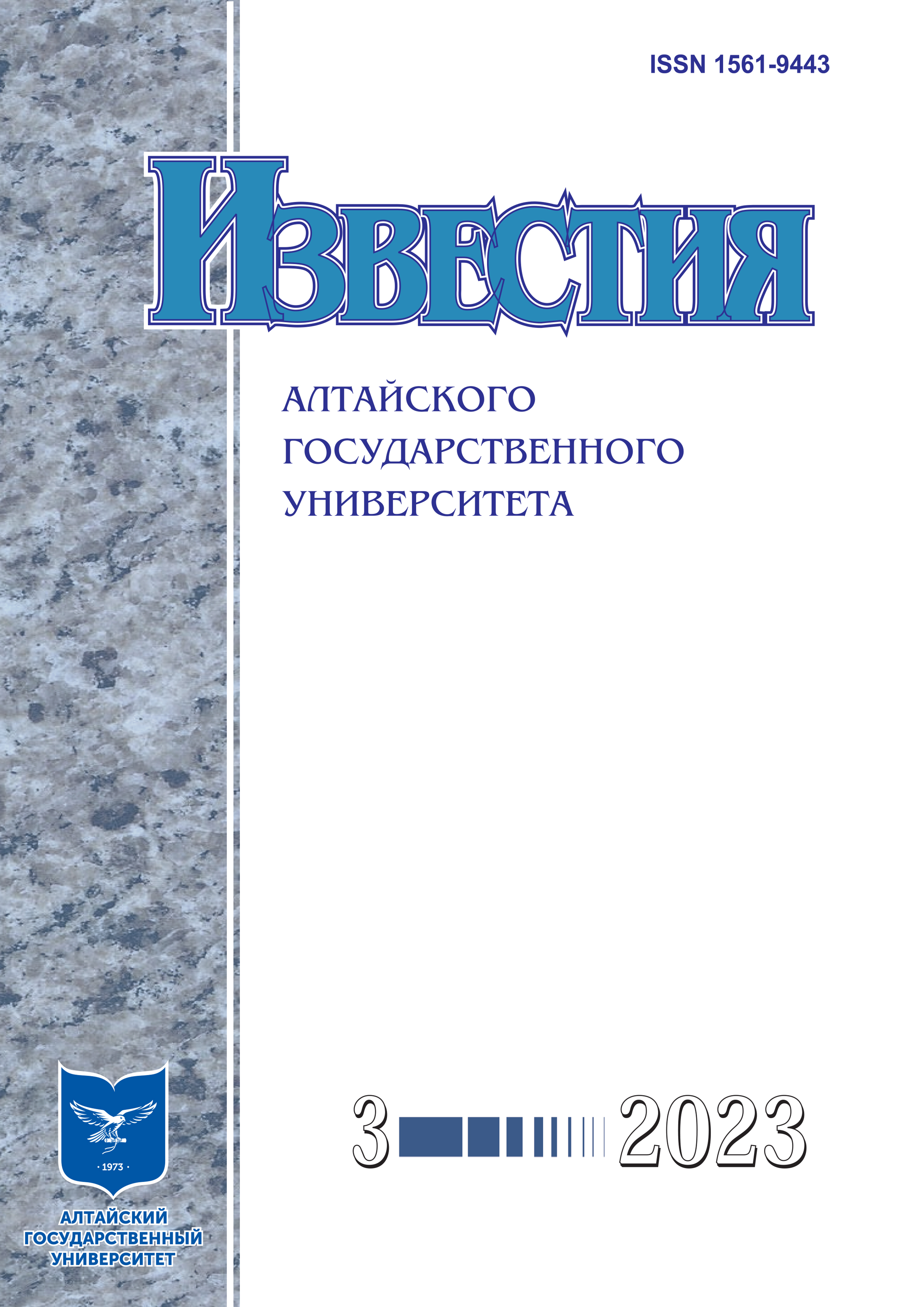Historiographic Aspects of the NKVD (MVD) of the USSR Fight against the Nationalist Underground in the Estonian SSR (1940-1953)
УДК 327.56 ББК 63.3(2)621-6
Abstract
The topic under study has an actual historical and political orientation. It is necessary to shed light on the events that took place during the Second World War, in the pre-war and post-war periods of the Estonian SSR. The activities of Estonian nationalists aimed at fighting the Soviet regime began to gain momentum after the Baltic States had joined the USSR and its peak was the June 1941 deportation. It was during this period that the nationalist underground system of Estonia, later called the “Forest Brothers”, began to form. It was aimed at undermining the authority of the Soviet governing bodies and the fight against the Soviet regime. The first open clashes began in the post-war period of 19441947, after the influence of the German propaganda apparatus on the minds of the population. It was then that the activities of the Soviet NKVD became a significant component in the fight against the nationalist movement in the Baltic States. In 1947, the activities of the Soviet NKVD organs and troops made it possible to discover and destroy the officer school that trained the Estonian partisans. This scientific work proves that the service of the Soviet security forces against the nationalist movement in Estonia in the period 1940-1953 was an important element that affected in their activities for the stabilization of the social and political situation in Estonia during the period under study.
Downloads
Metrics
References
Органы государственной безопасности в Великой Отечественной войне. Сборник документов. Т. 2, кн. 1: Начало. 22 июня — 31 августа 1941 года. М., 2000.
Сборник документов: Участие войск НКВД в Великой Отечественной войне (к 70-летию Победы в Великой Отечественной войне) : сборник науч. ст. Всероссийской научно-практической конференции. СПб., 2015.
Латышские писатели в передачах Советского радио в годы Великой Отечественной войны 1941-1945 гг. Рига, 1971.
Плотникова Н.В. Органы ОГПУ-НКВД-НКГБ в борьбе со спецслужбами Германии (1933-1941 гг.) : дис. . канд. ист. наук: 07.00.02. М., 2002.
Литвинов М.М. СССР в борьбе за мир. М., 1934.
Документы и материалы кануна Второй мировой войны / Министерство иностранных дел СССР. М., 1948. Т. 1.
Штарас П.Ф. В едином строю. Советские партизаны: из истории партизанского движения в годы Великой Отечественной войны / ред.-сост. В.Е. Быстров, ред. З.Н. Политов. М., 1961.
Хамзюк И.В., Гришунов М.И., Лабутин А.М. и др. Литовские, латышские и эстонские буржуазные националисты. М., 1961.
На страже границ Советского государства: историко-мемуарный сборник / сост. К.В. Регуш, Н.И. Афанасьев. М., 1971. Кн. 3.
Митин М.Б., Якушевский И.Т., Гайдис А.А. и др. Прибалтийская реакционная эмиграция сегодня. Рига, 1979.
Никитин С.В. Противостояние советских правоохранительных органов немецким спецслужбам и латышским националистам в Советской Латвии в период 1940-1945 гг. : дис. ... канд. ист. наук : 07.00.02. М., 2020. URL: https://search.rsl.ru/ru/record/01010246772?ysclid=leb vzly0v984716574 (дата обращения: 09.09.22).
Кродерс А. Протоколы сионских мудрецов. Рига, 1941.
Bilmanis А. Baltic Essays. Princeton, 1945.
The White Book: Losses Inflicted on The Estonian Nation by Occupation Regimes 1940-1991. Tallinn, 2005.
Huntingon S.P The Third Wave Democratization in the Late Twentieth Century. Norman, 1993.
Ковалев Б.Н. Нацистская оккупация и коллаборационизм в России 1941-1944. М., 2004.
Лаар М. Забытая война. Движение вооруженного сопротивления в Эстонии в 1944-1956 гг. Таллин, 2005.
Лаар М. Красный террор: репрессии советских оккупационных властей в Эстонии. Таллин, 2005.
Bruggemann K. Estonia 1940-1945. Reports of the Estonian International Commission for the Investigation of Crimes Against Humanity // Zeitschrift fur Ostmitteleuropa-Forschung. 2007. № 56.3.
Станкерас П. Международный военный трибунал в Нюрнберге — самый большой юридический фарс в истории // Veida. 2010. № 7.
Bubnys A. Nazi Resistance Movement in Lithuania 1941-1944. Vilnius, 2003.
3емгалс Б. Дни белые и черные. Рига, 1998.
Кууск П. Отдел по борьбе с бандитизмом (19441947). Спецвыпуск. Тарту ; Таллинн, 2010.
Литвинов М.Ю. Борьба органов госбезопасности с разведывательно-подрывной деятельностью прибалтийских спецслужб и националистических формирований в 1918-1941 гг.: монография. М., 2013.
Бурдс Дж. Советская агентура: Очерки истории СССР в послевоенные годы (1944 -1948). Москва ; Нью Йорк, 2006.
Дюков А. Миф о геноциде: Репрессии советских властей в Эстонии (1940-1953). М., 2007.
Copyright (c) 2023 Владимир Владимирович Тулубец

This work is licensed under a Creative Commons Attribution 4.0 International License.
Izvestiya of Altai State University is a golden publisher, as we allow self-archiving, but most importantly we are fully transparent about your rights.
Authors may present and discuss their findings ahead of publication: at biological or scientific conferences, on preprint servers, in public databases, and in blogs, wikis, tweets, and other informal communication channels.
Izvestiya of Altai State University allows authors to deposit manuscripts (currently under review or those for intended submission to Izvestiya of Altai State University) in non-commercial, pre-print servers such as ArXiv.
Authors who publish with this journal agree to the following terms:
- Authors retain copyright and grant the journal right of first publication with the work simultaneously licensed under a Creative Commons Attribution License (CC BY 4.0) that allows others to share the work with an acknowledgement of the work's authorship and initial publication in this journal.
- Authors are able to enter into separate, additional contractual arrangements for the non-exclusive distribution of the journal's published version of the work (e.g., post it to an institutional repository or publish it in a book), with an acknowledgement of its initial publication in this journal.
- Authors are permitted and encouraged to post their work online (e.g., in institutional repositories or on their website) prior to and during the submission process, as it can lead to productive exchanges, as well as earlier and greater citation of published work (See The Effect of Open Access).








